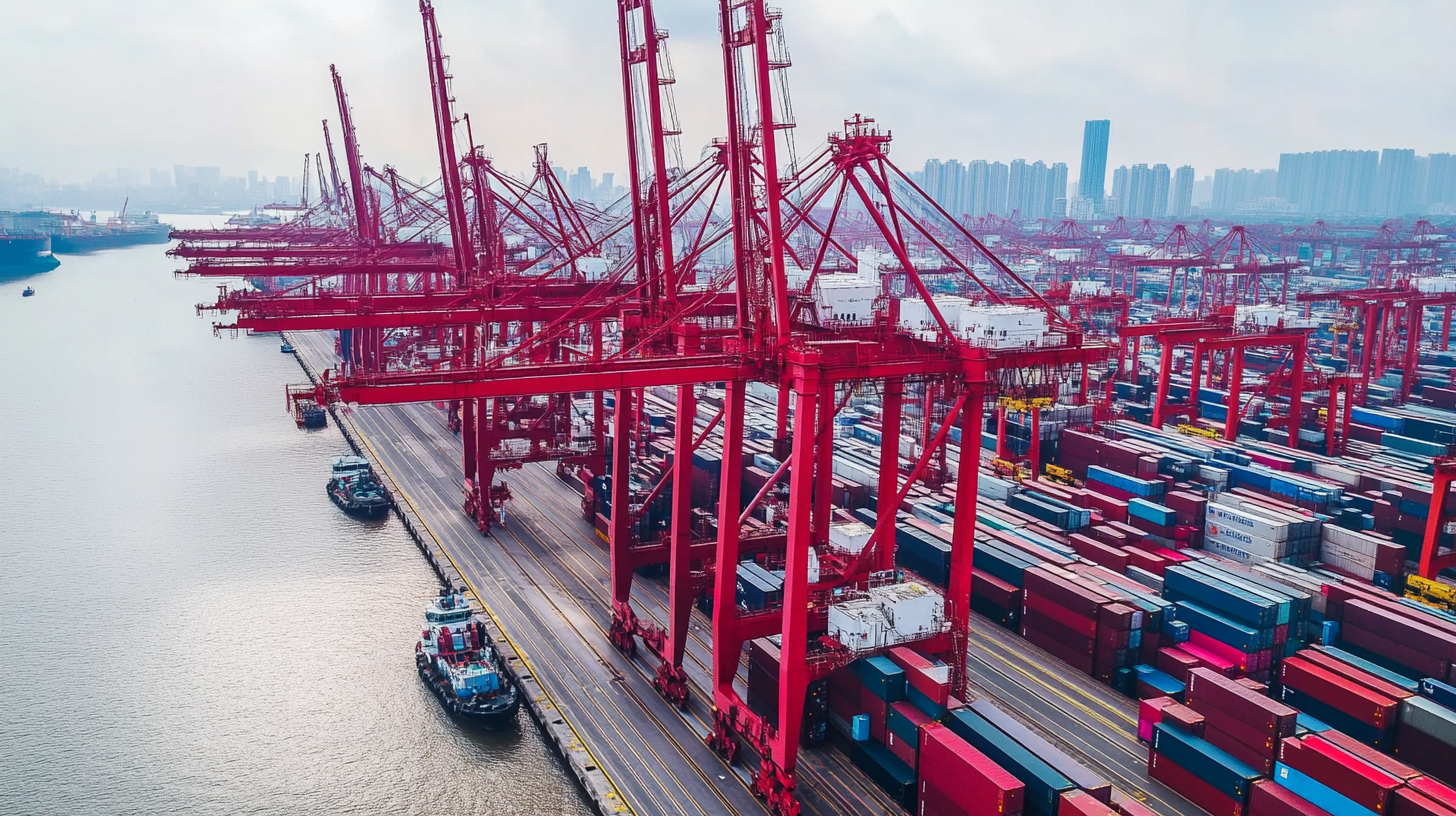Partner Login
Enter your username and password here on order to log in on the partner portal:
No registered partner yet?
Register nowRising Above Tariffs: How China’s Business Printers Thrive Amidst U.S.-China Trade Tensions
In the wake of escalating trade tensions between the U.S. and China, the printing industry has faced significant challenges, yet China's business printers have demonstrated remarkable resilience and growth. According to a recent report by Smithers Pira, the global printing market is projected to reach $980 billion by 2024, with digital printing gaining an ever-increasing share. This shift has provided an opportunity for Chinese manufacturers to innovate and adapt, leveraging advanced technologies and cost-effective production methods to cater to diverse market needs. Despite the imposition of tariffs, which have increased costs for many companies, China's business printer sector has seen an annual growth rate of 4.1% over the past five years, showcasing their ability to rise above economic pressures. This blog will explore the strategies employed by these manufacturers to thrive amid uncertainty and highlight the future prospects of business printers in a continuously evolving landscape.

Strategies for Resilience: How Chinese Printers Adapt to Trade Challenges
In the face of escalating U.S.-China trade tensions, Chinese business printers have demonstrated remarkable resilience and adaptability. According to a recent report by Smithers Pira, the global print industry is expected to grow to $980 billion by 2025, with Asia-Pacific showing the fastest growth rate. Chinese printers, often at the forefront of technological advancements, are leveraging this growth by investing in automation and eco-friendly solutions, thus improving their efficiency and reducing production costs.
To navigate the complexities of tariffs and trade barriers, many Chinese manufacturers have diversified their supply chains and established partnerships with local suppliers. A study by the China Printing Technology Association indicates that over 60% of printers have shifted a portion of their manufacturing to Southeast Asia to avoid tariffs, while others have invested in enhancing their export capabilities. By implementing strategies such as adopting digital printing technology and embracing sustainable practices, Chinese business printers are not only surviving but thriving in the face of adversity.

Innovation in Adversity: Leveraging Technology to Stay Competitive
In the midst of U.S.-China trade tensions, businesses in China, particularly in the printing sector, have been harnessing innovation as a tool to navigate adversity. The ability to leverage advanced technologies, such as automation and AI, allows these companies to enhance operational efficiency and reduce production costs. This strategic technological investment not only helps them stay competitive but also positions them favorably in the global market despite external pressures.
Furthermore, the emergence of new operating systems and software solutions signifies a move towards greater technological independence. Companies focusing on R&D are crafting innovative solutions that address both market needs and regulatory challenges. By prioritizing these investments, Chinese businesses in the printing industry can not only withstand current trade obstacles but also lay the groundwork for sustainable growth, showcasing resilience and adaptability in an ever-evolving economic landscape.
Rising Above Tariffs: How China’s Business Printers Thrive Amidst U.S.-China Trade Tensions
| Company Name | Market Share (%) | Revenue (Million USD) | R&D Investment (Million USD) | Technological Innovations |
|---|---|---|---|---|
| Company A | 25 | 500 | 50 | 3D Printing Technology |
| Company B | 30 | 600 | 70 | Smart Ink Technology |
| Company C | 20 | 400 | 30 | Eco-Friendly Materials |
| Company D | 15 | 300 | 25 | Automated Printing Solutions |
Diversification of Supply Chains: Mitigating Risks in Tariff-Laden Markets
In the face of escalating tariff challenges between the U.S. and China, businesses are adapting through strategic diversification of their supply chains. By broadening their sourcing options, companies can mitigate the risks associated with trade tensions and tariffs. This approach not only helps maintain competitive pricing but also enhances resilience against unexpected disruptions.
**Tip 1:** Evaluate your current suppliers and identify potential partners in regions less affected by trade tariffs. This could include exploring alternatives in Southeast Asia or even local production options that might reduce dependency on any single market.
Companies in the printing industry, for instance, are reallocating their manufacturing capacities to various countries, allowing them to bypass restrictive tariffs. Implementing a mixed sourcing strategy enables businesses to react swiftly to market changes and decreases vulnerability to supply chain disruptions.
**Tip 2:** Develop relationships with multiple suppliers for critical components. This not only reduces risk but can also lead to cost savings as you can negotiate better terms when suppliers are competing for your business.
Ultimately, the ability to adapt through supply chain diversification will determine which businesses thrive amidst ongoing U.S.-China trade tensions. By implementing these proactive strategies, companies can safeguard their operations and succeed in a turbulent market.
Revenue Growth of Chinese Business Printers (2018-2022)
Customer-Centric Approaches: Meeting U.S. Demands Amidst Trade Tensions
In the face of escalating U.S.-China trade tensions, businesses in China have adopted remarkably customer-centric approaches to navigate the complexities of varying demands from U.S. consumers. With recent legal challenges against the tariffs imposed during the previous administration, Chinese manufacturers are increasingly aware of the necessity to align their strategies with American preferences, emphasizing quality, sustainability, and timely delivery. This adaptability not only addresses the pressing concerns of tariffs but also enhances customer loyalty and trust in an uncertain economic landscape.
Furthermore, as trade negotiations seem to stall, companies are proactively exploring innovative solutions to minimize operational disruptions. By focusing on the specific needs of U.S. customers, such as incorporating advanced technology and maintaining competitive pricing, these businesses are rising above the restrictive tariff environment. The ability to provide tailored products that resonate with U.S. market trends will be crucial in maintaining market share and fostering long-term relationships, even as the broader geopolitical climate continues to evolve.

Future Outlook: The Evolution of China’s Printing Industry in Turbulent Times
The printing industry in China has shown remarkable resilience despite ongoing U.S.-China trade tensions. According to a report by Smithers Pira, the global printing market is projected to reach $980 billion by 2025, with Asia-Pacific expected to account for over 40% of this growth. This trend is particularly pertinent for China, as domestic printers adapt and innovate in response to trade challenges. By investing in advanced technologies such as digital printing and automation, businesses are not only improving efficiency but also enhancing the quality of their products, thereby gaining a competitive edge in international markets.
Looking ahead, the evolution of China's printing industry will likely be characterized by a shift towards sustainability and eco-friendly practices. The China Print Industry Association has indicated that over 50% of enterprises are now prioritizing environmentally sustainable materials and processes to align with global trends. This strategic pivot is not only vital for compliance with international regulations but also appeals to an increasingly eco-conscious consumer base. As China's printing industry evolves, its ability to navigate turbulent times will hinge on its readiness to embrace innovation and sustainability, setting the stage for long-term growth and resilience against external pressures.